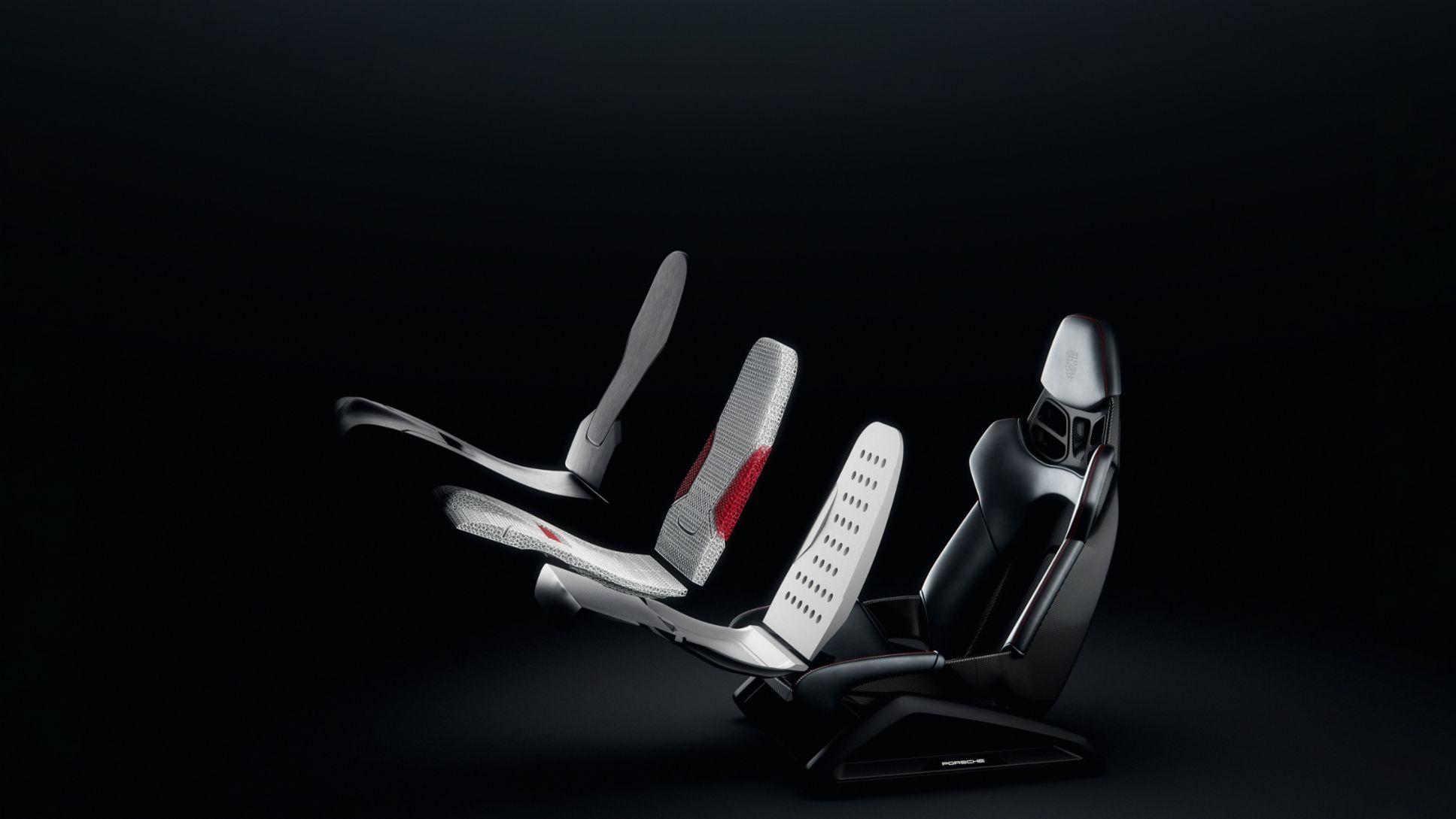China3D printingIn March 2020, German automaker Porsche announced that it would begin testing a new production concept: partially 3D-printed body bucket seats. Now, the trajectory from testing to production appears to be less than two years in total, as Porsche has now announced the product. The Porsche Tequipment website will offer Boxster, Cayman and 911 models upon request. In addition, starting early next year, the company will show its new designs to a wider audience, as it plans to add 3D-printed seats to Porsche-exclusive cars in February 2022 as a standard feature in the brand’s personalization program, At that point it will also be part of the Porsche Car Configurator.
“In professional racing, seats suitable for the individual driver have been around for a long time. Now, Porsche also offers road-approved customization in different stiffness levels as standard,” noted German racing driver Lars Kern, who has been involved in the past few years. Porsche is one of the many customers chosen as test drivers at various motor shows in 2018. “During my initial test drive, I was impressed with the ergonomics – the slightly lower seat position and improved thigh support are similar to what you’d get from a racing seat. Passive ventilation is also impressive deep impression.”

One of three color options Porsche offers for its partially 3D-printed body bucket seats. Image courtesy of Porsche.
Parts of the cushion and backrest are 3D printed from a combination of polyurethane-based materials. One of the benefits of this is that parts made with AM have three different rigidity grades that customers can choose from. They are then clamped with the rest of the seat, which the company notes results in a product that doesn’t produce the emissions associated with the adhesives used in traditional car production. In addition, the 3D printed seat is more than 8% lighter than traditionally manufactured seats.

The Porsche 3D printed body bucket seat consists of its four main components. Image courtesy of Porsche.
Porsche’s approach to testing its concepts here is particularly noteworthy. For example, it’s remarkable to look at a company’s press release and see a quote from an actual customer rather than a CEO or engineer. That’s an advantage for automakers: getting immediate feedback directly from actual consumers of their brands. On the one hand, this helps a lot from the point of view of quickly and consistently integrating customer responses into the R&D process.
Furthermore, since brand loyalty factors may be more important for luxury car manufacturers than for any other industry, feedback from such research can be counted on to be a more reliable indicator of actual, future business outcomes than would otherwise be the case. In other words, if the people testing the product like it, as in this case, you can expect a similar reaction from actual customers. As such, Porsche’s particularly clever focus group strategy may have largely been responsible for the project’s rapid transition from conceptualization to execution.
China3D printingNet Comment: German automakers appear to be leading the way in incorporating additive manufacturing into their mass production plans. For example, drivers of the BMW Mini have been able to customize every aspect of the seat since 2018, thanks to features designed and built using 3D printing technology. Likewise, Volkswagen announced earlier in 2021 that it expects to 3D print 100,000 parts per year by 2025. So while the U.S. and China appear to be repeatedly doubling down on applying AM to aerospace and defense, Germany appears to be leading the way in direct-to-consumer innovation. If the industrialized past is any indication of its future, it may prove to be a wise move in the long run.
(responsible editor: admin)


0 Comments for “Porsche has unveiled partially 3D-printed car seats”